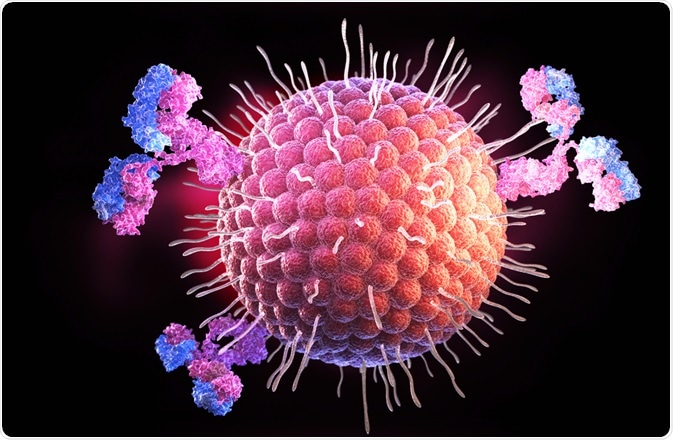Types of lateral flow assays
Lateral flow assays detect a compound of interest in a compact, paper-based system. Tests such as pregnancy tests are based on lateral flow assays, with many more available for various compounds or even pathogens. Samples are treated so that compounds of interest bind to an antibody-conjugate, which can then be visualized.
 Image Credit: Tatiana Shepeleva / Shutterstock.com
Image Credit: Tatiana Shepeleva / Shutterstock.com
Within what is termed the detection zone, two lines are present, known as the test and control lines; the test line shows the presence of a compound of interest, and the control line is present to show that the sample has passed the test line. The type of lateral flow assays is based on how the compound of interest is detected, and one will be described in detail.
Lateral flow immunoassays
In lateral flow immunoassays, antibodies are used for the detection of the compound of interest. There are two formats within lateral flow immunoassays:
Sandwich lateral flow immunoassay
Sandwich lateral flow immunoassays are used in pregnancy and HIV tests. Here, antibodies that detect the compound of interest are placed on the test line. Then, a different antibody which also binds to the compound of interest is labelled to become an antibody-conjugate, and then mixed with the sample.
When the test is run, the compound of interest will not only bind to the antibody-conjugate but also to the antibodies on the test line. This then makes the test line visible due to the presence of the antibody-conjugate which has bound to the compound of interest.
Competitive lateral flow immunoassay
In the competitive format of lateral flow immunoassays, there are two further divisions.
In the first division, the compound of interest is immobilized onto the test line. Antibody-conjugates are mixed with the sample as usual, but following this first step, the methodology of the two types of competitive immunoassay begins to diverge.
In this first format, the antibody conjugate binds to the test line only if it has not bound to the compound of interest within the sample before reaching the test line; i.e. if the sample has no compound of interest, then the antibody-conjugate is free to bind to the test line, but if the sample contains a high concentration of the compound of interest the antibody-conjugate will bind the compound in the sample rather than the test line.
In the second division, the compound of interest is immobilized on the test line, this time by binding it to the antibodies on the test line. This then, means that if the antibody-conjugate has the compound of interest bound to it, it cannot bind to the test line as the compound of interest has already been added to the test antibodies. If there is no compound of interest in the sample, then the antibody-conjugate then binds to the compound immobilized on the test line.
What this means is that, confusingly, a positive result will not result in a line becoming visible on the test line, while a negative result will produce a visible line on the test line for both divisions.
Why use a competitive lateral flow immunoassay? – certain small molecules only have one “antigenic determinant” that can bind antibodies. Therefore, it is not possible to use two antibodies like in the sandwich format.
Improvements in lateral flow assays
Improvements in lateral flow assays in recent years have come from new ways to enhance signals, new labels, improvements in quantification and detecting multiple compounds of interest simultaneously. For example, to improve the detection signal of gold nanoparticles, silver enhancement technology has been applied.
Another method involved the use of enzymes within the gold nanoparticles to form a different type of antibody-conjugate. These enzymes, like horseradish peroxidase, can break down (catalyze) compounds to form a colored substrate, which can then be detected on the test line and may be more sensitive than just using traditional antibody-conjugates alone.
Further Reading